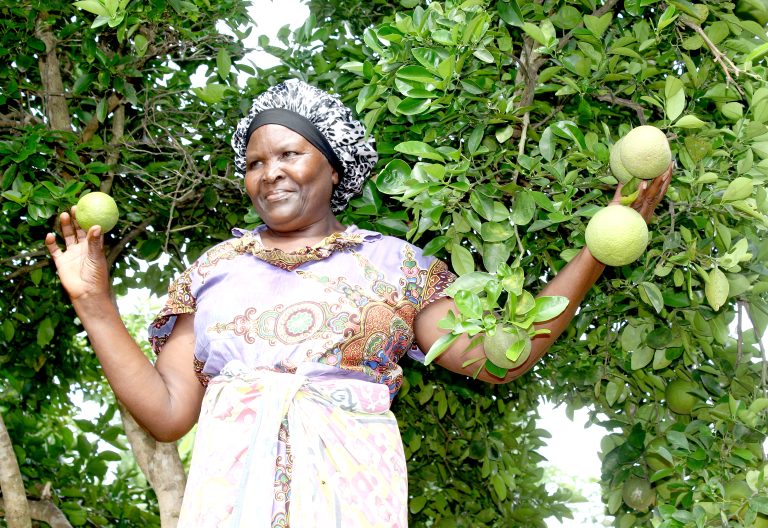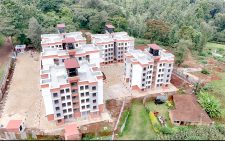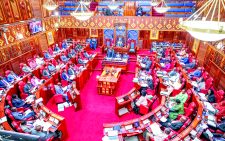Kwale growers embrace smart farms to tackle climate change

Under the sweltering sun of Mwabandari village, Kikoneni in Kwale County, rows of orange trees sway gently beside thriving plots of spinach, tomatoes, maize and green grams, symbols of a quiet agricultural revolution.
Here, local farmers are turning to climate-smart agriculture, blending fruit trees with vegetables not just to feed their families, but to fight back against the mounting threat of climate change.
With an eye on the future, they are also planting trees with the hope of tapping into carbon credit markets in five years, transforming their farms into both food baskets and environmental assets.
For years, unpredictable rainfall and prolonged droughts had cast a dark shadow over farming not just in Kwale but across the coastal region.
Today, a new spirit is taking root as farmers adopt practices designed to rehabilitate degraded agricultural lands, conserve water, enrich soil and withstand extreme weather.
Terracing, mulching, organic composting and agroforestry are becoming the norm, empowering the community to not only survive, but thrive in a changing climate.
At the heart of this shift is a growing awareness that traditional farming methods alone can no longer sustain households or protect the environment.
Spearheaded through the Restore Africa programme sponsored by the Global Evergreening Alliance, the new transformation in Kenya is being implemented through a consortium of partners led by World Vision in partnership with Just Diggit, World Agroforestry, Self Help Africa, Green Belt Movement and Africa Harvest.
Sense of purpose
The programme is being carried out in five counties: Kwale, Kilifi, Elgeyo Marakwet, Narok and Migori.
In Kwale, farmers like John Mutuku say the integration of fruit trees such as passion trees alongside vegetable crops is yet to boost the harvests, improve livelihoods and shield the soil from erosion.
“When I combine vegetables with trees, I harvest more, food security is assured and the land stays fertile,” Mutuku, who farms vegetables, fruits, maize, green gram, mangoes and bixa among others, said.
According to him, they received training and tree seedlings, as well as knowledge on how carbon credits work, an idea he terms as simple but powerful.
Trees absorb carbon dioxide, and over time, farmers could earn money by selling carbon credits to companies seeking to offset emissions.
Although the benefits may take several years to materialise, according to Mutuku, the long-term vision is creating a strong sense of purpose and hope.
Another farmer, Paulo Muteti, acknowledges the agricultural programme as more than a strategy, adding that it’s a lifeline and a legacy in the making.
According to him, their area once resembled a desert, but that began to change last year when farmers learned about the climate-smart agriculture project. Since then, they have embraced tree planting alongside mixed farming, gradually transforming the landscape.
“It’s just a matter of time before we start seeing the full benefits of our hard work,” said Muteti.
He believes that with continued efforts, hunger will soon be a thing of the past, as the farms begin to produce food in abundance.
On his two-acre plot, Muteti grows maize, green grams, passion fruits, and a variety of vegetables. He’s also optimistic about the long-term potential of the carbon credit initiative, which he says could significantly improve his livelihood. Before the project, they didn’t know it was possible to grow so many different crops on their land.
He said that the knowledge they have gained has made them more productive and confident in their farming.
Muteti said they have been assured of a ready market for their produce, and now all that remains is their commitment and hard work.
“We’ve been given the tools and knowledge, we just need to stay focused and consistent,” he said.
Restore Africa Kenya’s Natural Resources Officer Elizabeth Nyagoha, said the main goal of the project is to engage the community-led land restoration, livelihood improvement, and carbon removal programme.
Elizabeth explained that the programme seeks to restore over 1.8 million hectares of degraded land, improve the livelihoods of 1.5 million small-scale farming families, directly affecting 9 million people and sequester 80.5 million tonnes of carbon dioxide (CO2).
She added that in Kenya, the programme aims to restore 250,000 hectares of land, benefit 250,000 smallholder farmers, and sequester over 11 million tonnes of CO2 over 30 years.
Nyagoha further said that in Kwale, the project seeks to impact 50,000 households in Kinango, Shimba Hills and Lunga Lunga sub-counties.
It also seeks to restore 70,000 hectares of degraded land through a combination of Farmer-Managed Natural Regeneration (FMNR) and the planting and growing of 3,500,000 trees.
Africa Harvest County Implementing Officer, Yusuf Kiponda, said they are actively helping farmers secure reliable markets for their produce.
“We’re not just training farmers on climate-smart practices, we’re also working to ensure they have a place to sell what they grow,” he said, adding that markets have already been identified for green grams, chicken, and oranges, which are among the key value chains supported by the programme.















